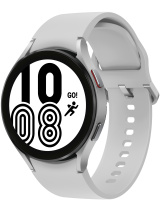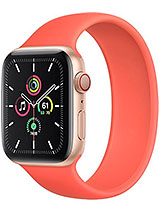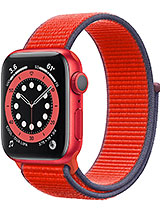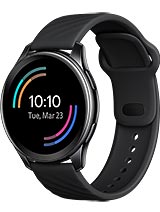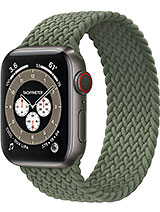Garmin Fenix 6 vs Apple Watch Series 6 // An Unfair Comparison? By DesFit
This could get a little spicy how's it going folks, I'm does wood does fit, and, as most of you probably already know, these are two very different devices: one's an amazing smartwatch and one's an amazing sports watch. So this may be considered an unfair comparison. However, the Apple Watch Series 6 and the Garmin Felix 6 they're, both very popular watches, they're each company's high-end offerings, and they're both great devices in their own respect, which may be a reason why so many of you out there requested this video, so ask, and you shall receive now. You may think that I'm going to come right out and say that one watch is better than the other, but it's a bit more complicated than that, and it really comes down to the features that you need out of a watch, and my aim with this video is to help you figure that out. So if this video does help you out at all, don't be shy about hitting that like button down below so in this video I'll, be going over lots of different aspects of these two devices from the sports and fitness features to the smartwatch features to the ecosystems that they live in, but let's go ahead and first start out with the hardware in terms of design. Well, that's all personal preference.
One is a more traditional looking watch, which will probably appeal to those of you who want something that resembles a more traditional timepiece. The other is well an Apple Watch which was unique at one point in time, but they've become so popular that other companies have used it for um inspiration would be a good way of putting it, but when it comes to durability, this is kind of a no contest with the phoenix lineup it's built for durability, with a metal bezel, a solid metal back metal buttons and there's even a more durable option. With a sapphire glass display. I've dropped, phoenix's accidentally hit walls with them and even take some hard mountain bike crashes on them, and they may not necessarily be as pretty as day one, but they're still working perfectly fine. The series 6, on the other hand, is going to be much more susceptible to damage, since it has a raised glass display with really no bezel to speak of, and just like all the watches I wear, I've accidentally dropped them.
I banged them up against walls, just all the normal stuff that happens in my day-to-day life and for the most part apple watches have been okay, but I do have a small scratch on my series 5 and then on another occasion I dropped a different series 5 on a tile floor, and it shattered. So with the series 6, you probably will have to be a little more careful with it than the phoenix 6. But the nice thing is: is that apple does offer a sapphire glass screen option, that's going to be available on the stainless steel and titanium models and then, in terms of water resistance. The series 6 is water resistant down to 50 meters and then the phoenix doubles that to 100 meters and now would probably be a good time to talk about price. The base level series six comes in much less than the base level series six.
However, once you get into the stainless steel and titanium options with the series six, then the prices become a little more similar and then the phoenix 6. This comes in three different size options and then the series 6 comes in two different size options, so you should be able to find a size. That's going to work right for you in terms of comfort, I probably have to give it to the Apple Watch, with its rounded corners and the domed heart rate sensor. The phoenixes are a smudge heavier overall, and I wouldn't call them uncomfortable by any means, but I think the apple watches are just a little more comfortable to wear and now, let's get into how you actually interact with these devices. So first there's the series: six, which uses a combination of a touchscreen along with two physical buttons.
One of those buttons does double duty as a digital crown, which you can use to scroll through different areas of the watch. The combination of all these elements is pretty darn good for the most part, but once you get into the sports and fitness scenario, it can be a little more challenging to use with the phoenix sixes they use five physical buttons, and this works extremely well during activities. You can press a button without even having to look at your watch, which is super convenient, but the drawback with the vx6 is that navigating through longer menus can be a little less convenient without the touchscreen or the digital crown that you find on the series 6. One tip I do have for. You, though, is that on an Apple Watch, the default thing that you may want to do to pause or stop an activity is to swipe to show the screen where you can stop your activity.
Another thing that you can do is press both buttons at the same time, to pause the activity which I find to be a little more convenient just make sure that in your watch settings that you don't have it set to take screenshots when you press both buttons for displays again quite different here, where the series 6 has a super bright and crispy OLED display where the phoenix 6 uses this transfection display technology. The display in the phoenix 6 is optimized for great readability outdoors, especially in direct sunlight, but isn't going to be as vibrant as the series 6. And a big reason for these differences is due to battery life. So with the Garmin displays, they may not be the prettiest to look at, but they consume much less power than an OLED display, and then that brings us to battery life and that's going to be a stark difference between these two, where you can get a week or two out of a phoenix, even while recording outdoor activities, and it will depend slightly on the different size model that you choose where, with an Apple Watch. That's only going to last about a day or two before you have to recharge it, which is not a lot.
So now, let's get into the smartwatch features, so the series six. It is an amazing smartwatch if you own an iPhone because it's not compatible with an android phone with the phoenix 6. Well, you can pair this with an android phone. You can pair with an iPhone heck. You can actually even use the phoenix 6 all by itself without pairing it to a phone at all.
However, you will miss out on a lot of functionality. Apple watches simply provide the best smartwatch experience if you own an iPhone, it's a seamless integration allowing for robust text responses, including writing on the screen, voice, dictation, emojis, just tons of stuff, and the same thing goes for calls where you can speak on the watch itself, using the built-in speaker and microphone and then there's all the app integration with other iOS. Apps apple has a huge advantage, of course, since they make both the watch and the phone, so they control both ends of the equation and with the phoenix 6. The call and text functionality will depend on which phone platform that you're using so if you're on an iPhone you'll, be able to receive all the notifications, but you won't be able to interact with them. However, if you're on an android phone, you will be able to reply to text using predefined responses that you set up in gamma connect and the reason that you can't reply to text on a Garmin device by the way has all to do with apple and nothing to do with.
Garmin definitely wants this functionality. It's just that apple locks down that functionality to Apple devices. Another advantage with this series 6 is that there's an option for a LTE model with cellular connectivity. Now I'm mentioning this in the smartwatch section in this video but realistically for me, I find the cellular connectivity to be really beneficial in the sports and fitness capacity, because most times when I want that sort of connectivity, I want to leave my phone at home and that's generally, when I'm going to be doing an activity where I don't want to carry anything on me and for music. This is kind of an interesting one where the series 6 it has the capability to stream music directly to the watch.
If you have a data connection- and it does also have the capability of storing tracks on the watch itself, but I think, as of right now, it's only limited to Apple Music as well as Pandora. However, with the phoenix 6, you actually have a broader selection of apps that you can use to load music onto the watch itself, so you can use Amazon, music Deezer as well as Spotify, but the phoenix does not have the direct music streaming capability. Okay, so now on to the health, wellness and fitness features of these devices, so both of them have heart rate sensors. Both of them have spo2 sensors. Both can track your steps and your calories and both have sleep tracking amongst a host of other things, but there are going to be some differences between these two.
So, although both these devices provide sleep tracking, the phoenix 6 provides much more detail than what the series 6 does natively, where you can get a sleep score time spent in different sleep stages, and quite a bit of feedback, which also feeds into a data point on Garmin devices called body battery, which gives an indication of your energy levels throughout the day and how well you recover. Throughout the night, the sleep tracking was initially not so great on garment devices, but I have seen improvements, and it's a lot better now on the series.6, it's pretty accurate in terms of tracking sleep, but the data it collects is kind of basic on the native app. It just provides you with how long you slept with a very basic chart with little detail. It's accurate in tracking the time I went to bed and woke up, but that's about all the information that the native app gives you. However, there are a lot of third-party apps out there that can provide a lot more data.
Both devices do offer a spo2 sensor for measuring blood oxygen levels. I find the series 6 to be a bit closer to a fingertip spo2 sensor than the phoenix 6, but realistically neither of these are medical grade devices in this respect. So just take these figures with a grain of salt. However, when it comes to the heart rate sensor, that's where the series 6 takes the cake, so the heart rate sensor on the series 6 the series 5, as well as the series 4. , they are some of the best wrist based optical heart rate, sensors on the market.
Today, apple's really done some magic in this area, and it's not perfect by any means, but it is basically the best I've ever seen. GPS performance on both these devices is pretty good, but the phoenix 6 will provide a bit more detail when it comes to the actual GPS tracks. One strange thing, though, with apple watches, is that when you go to start an activity, it doesn't really tell you whether you have GPS reception, whereas with pretty much every other fitness device out there it'll give you an indication of a GPS lock. Even so, I haven't really ever had any big issues with this and almost all the time, it's able to pick up the GPS signal quickly, and I haven't lost any total distance, but when it comes to the overall sports and fitness capabilities, the phoenix 6 really has the upper hand. Here, it's a device, that's purpose built for sports and fitness.
There are just a ton of different activity profiles that you can choose from to provide you with tons of data to scour over there's mapping on the phoenix 6 pro and the sapphire models. Plus it's going to be super durable for whatever you may throw at it. The series 6, on the other hand, does have a lot of sport profiles to choose from with their native workout app, but the data it collects is more on the basic end of things, and you can't dive in to see the level of detail that you can on the phoenix 6. Now you can extend the functionality of the series 6 with third-party apps to get lots more data like for cycling. You could use cycle meter, you could use a view ranger for maps and navigation.
There's a strata app that you can use directly on the watch itself, since the native workout app doesn't integrate with strata easily there's even a stride app for using with a stride. Foot pod, there's really just a ton of apps to choose from, but this does also translate into the external sensors that each of these devices can support. So the phoenix 6 has just a ton of external sensors that you can hook up from heart rate, sensors to speed and cadence sensors power meters, foot pods, electronic bike, shifting Garmin, Mario lights and radars bike trainers, just lots of stuff and with the phoenix 6 compared to both Bluetooth, and ant plus external sensors, which opens up the doors to lots more options than what the series 6 can do, which is only paired to Bluetooth sensors. And it is great that you can extend the functionality out of the series 6 with a lot of those third-party apps. But one thing to keep in mind is that you may have to download a lot of different types of apps to replicate the functionality that you can get out of the phoenix 6 and those apps may not necessarily work seamlessly together where, with the phoenix 6, it's all just kind of built right in for training features.
Both these devices offer their own different flavor. So with the phoenix 6, it offers a lot in terms of training, feedback and lots of data to pour over. It also has training guidance along with some coaching elements to go along with all that. It's definitely for somebody who likes to analyze their data a lot and with the series 6. Furthermore, it doesn't offer much in terms of guidance, but you can benefit from the apple fitness plus platform, which offers peloton style, guided workouts that are really easy to get into and fall along, but this kind of comes around full circle to the ecosystems that these watches live in so with the Apple Watch ecosystem.
Furthermore, it's a really well-thought-out integration of their watch to their phone to the iPad, to their laptops all the way to the Apple TV, so with apple fitness plus you'll, be able to do the workout on your iPad, while being able to integrate with your Apple Watch seamlessly to see your data on the screen itself. Apple's devices are built with their other devices in mind, which makes for a really nice experience like one of my favorite. Things are, if I'm using Apple Maps to navigate on my phone it'll, actually give me a little haptic feedback on my Apple Watch when I need to make a turn, which is pretty darn cool, but Garmin does do the same sort of thing just more on the fitness side of things, with their accessories. So Garmin has their HRM pro heart rate, strap, which collects much more data than just heart rate. There's going to be integration with Garmin barrier radar, lights, power, meter, pedals bike trainers, just a lot of accessories that integrate pretty much nearly seamlessly with their devices, and the nice thing is that you can access all this data through the Garmin connect, smartphone app, but all that data is also going to be accessible through a web browser for those of you who really want to dive in deep.
The series 6 is very cohesive when it comes to the smartwatch and lifestyle experience, but maybe not as much on the fitness end of things, especially if you're trying to replicate a lot of the functionality that you can get with the phoenix 6 that comes straight out of the box. So when it comes to choosing between the series 6 and the phoenix 6. Well, it's not so cut and dry. There's a lot of things to consider such as the fact that the series 6 it's going to provide an amazing smartwatch experience. If you own an iPhone there's the battery life, which is going to be a night and day difference between the two there's.
The fact that the series 6 has an amazing heart rate sensor, but the phoenix 6 can pair to a lot more external sensors plus it collects just a ton of data anyhow. These are just my thoughts on these two devices, but definitely let us know in the comment section down below what you think of both of these and which one you would choose for your needs. Anyhow. If this video did help you out at all, don't be shy by hitting that, like button down below and also subscribe to, the channel for plenty more sports tech, videos that are coming soon in the meantime have fun out there, and we will see you in the next video you.
Source : DesFit

